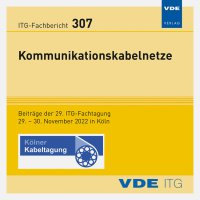Impact of air flow on the flame spread in EN 50399 CPR test
Conference: Kommunikationskabelnetze - 29. ITG-Fachkonferenz
11/29/2022 - 11/30/2022 at Köln
Proceedings: ITG-Fb. 307: Kommunikationskabelnetze
Pages: 5Language: englishTyp: PDF
Authors:
Bhargava, Hariom (Corning Technologies India Private Limited, Haryana, India)
Meyer, Thomas; Stoecklein, Waldemar (Corning Optical Communications GmbH & Co. KG, Berlin, Germany)
Abstract:
The Construction Product Regulation (CPR) mandates certification of the fire performance of cables installed in buildings across the European Union (EU). This is based on exposing a set of cables mounted on a vertical ladder, to a burner flame in a test chamber. The test is governed by the EN 50399 standard, and the CPR class of the cable is primarily determined by vertical flame spread (FS), heat released, and smoke production during the test. Historically, the test results have shown significant deviation across different test facilities, potentially impacting the CPR class of the cables. Systematic investigation of the test procedure in the past revealed a dependence of the test outcome on the external airventilation system. Modifications in the geometry of the air supply system, or leakages in the chamber were shown to impact the FS. As part of the ongoing investigation of the system, it was found that changes in the air supply system can reduce the FS by almost 0.4 m if a plate is introduced in the underfloor duct. Modeling and subsequent experimental measurements showed that this modification reorients the airflow towards the burner, which could “quench” the combustion mixture, leading to lower FS. In 2019 at the 26. ITG-Fachtagung, it was reported that modifying the air supply system affects the test outcome. The modifications shown in that study were not as per test standard and can be easily identified with visual inspection of the burn chamber. The modifications proposed in current study are not easy to identify by visual inspection. Based on these observations, it may be useful to add guidelines on measuring airflow distribution in the chamber in the CPR EN50399 test documentation.


